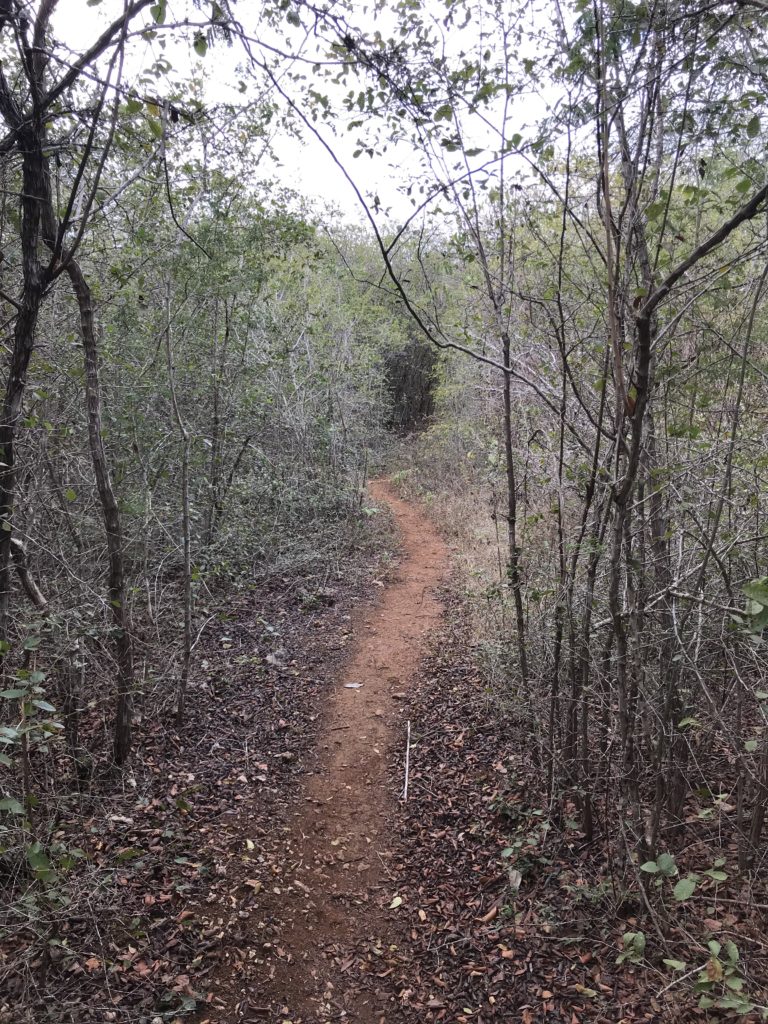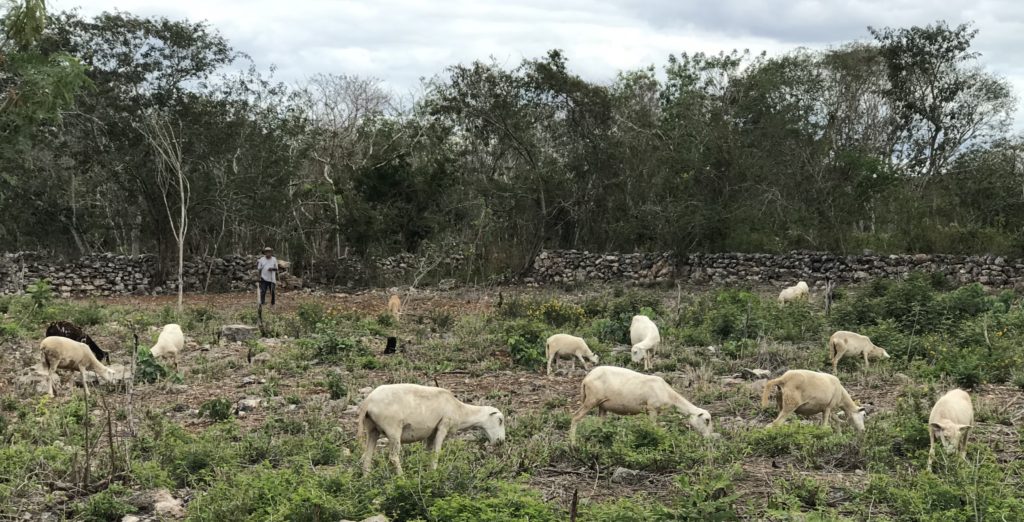
Naturalist Jim Conrad had several visitors on Monday. Early in the morning a pair of hunters walked past him, within arm’s length, while he sat in his front door, reading. They were carrying shotguns, said hello, apparently oblivious that they were intruding, and kept walking. Later in the day we would learn that another group of hunters, with dogs, were driving deer in their direction.
Around noon, after stopping for a plate of huevos Mexicanos in Teya, I delivered an old friend of Jim’s to the ranch for a site visit, while I engaged in some repairs. A valve, which enables Jim to fill a concrete stock tank providing water for local fauna, had broken. While I was rummaging in the stone hut for parts, Ines, another expected visitor showed up. At about the same time, I heard a male voice outside the hut say Jim’s name, at which point I met Tonio, a neighbor. We all collaborated in the repair, which was fun and successful. Here’s a look at the failed valve, but I never bothered to take a picture of the repair:
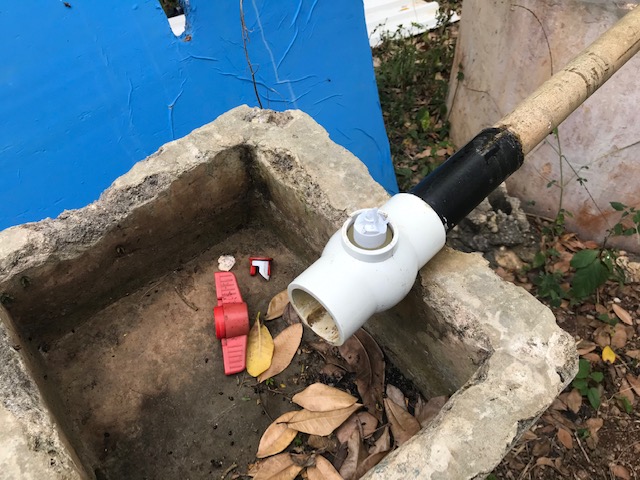
Once we verified that our repair worked, it was time to walk along Jim’s extended trails, including past some Africanized honeybees, which had given Jim some trouble while working on the trail.

Since we were headed in the direction of Tonio’s ranch, he invited us to come see their operation which includes 27 head of sheep.
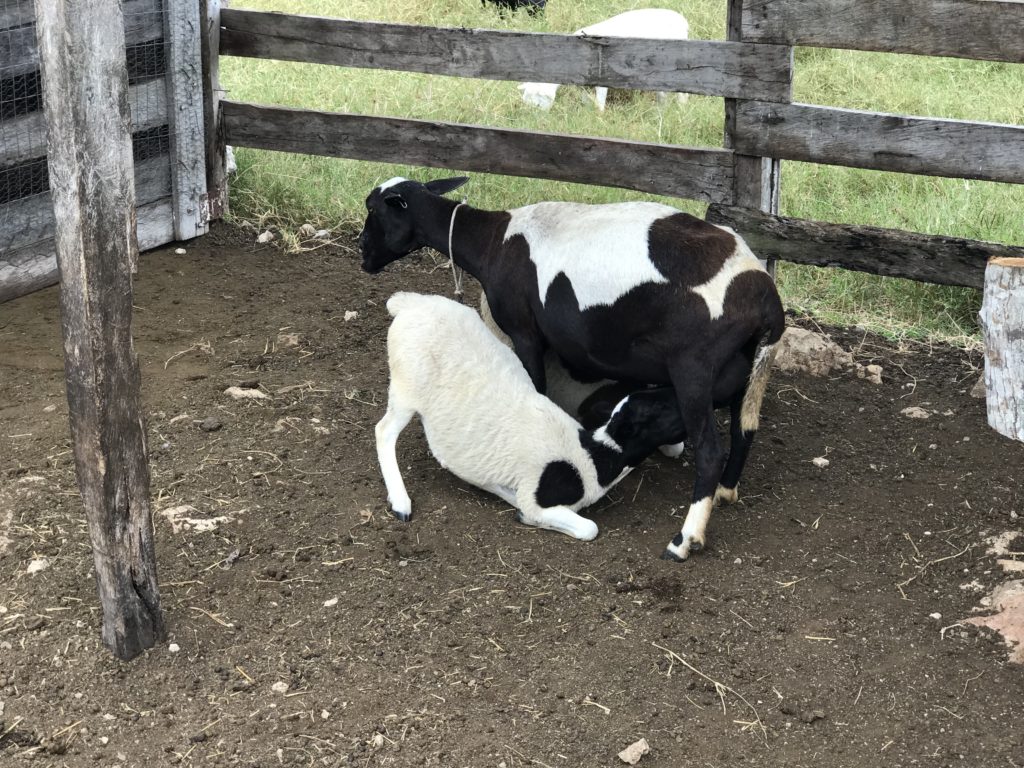
Next, Tonio showed us their melipona honeybees. These bees are tiny, black, about the size of a housefly, and stingless. The honey is said to be medicinal, and is pricey, but rarely found, as the production volume is low.
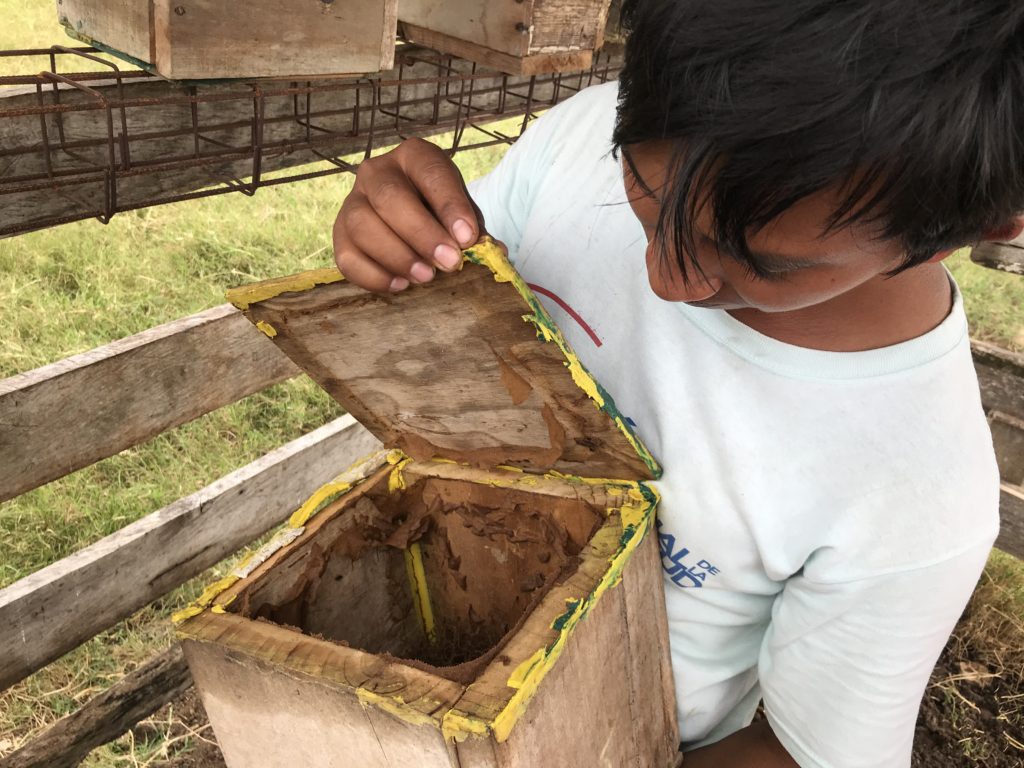

Below, Ines asks Tonio about his raised-bed gardening, while Jim listens.
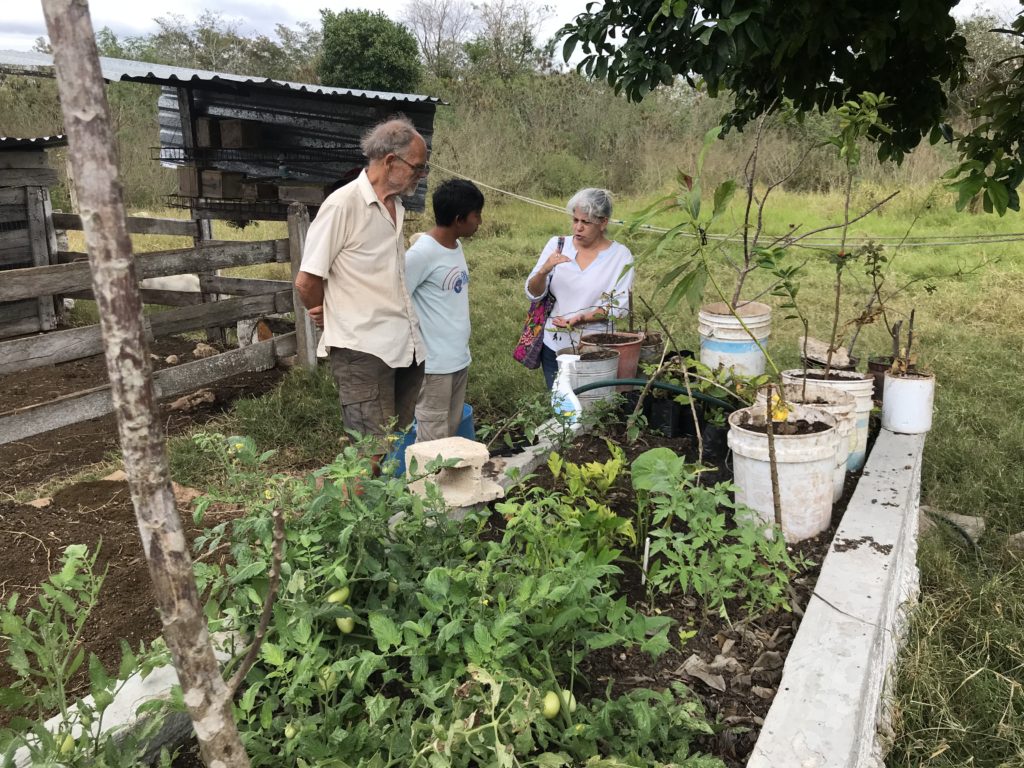

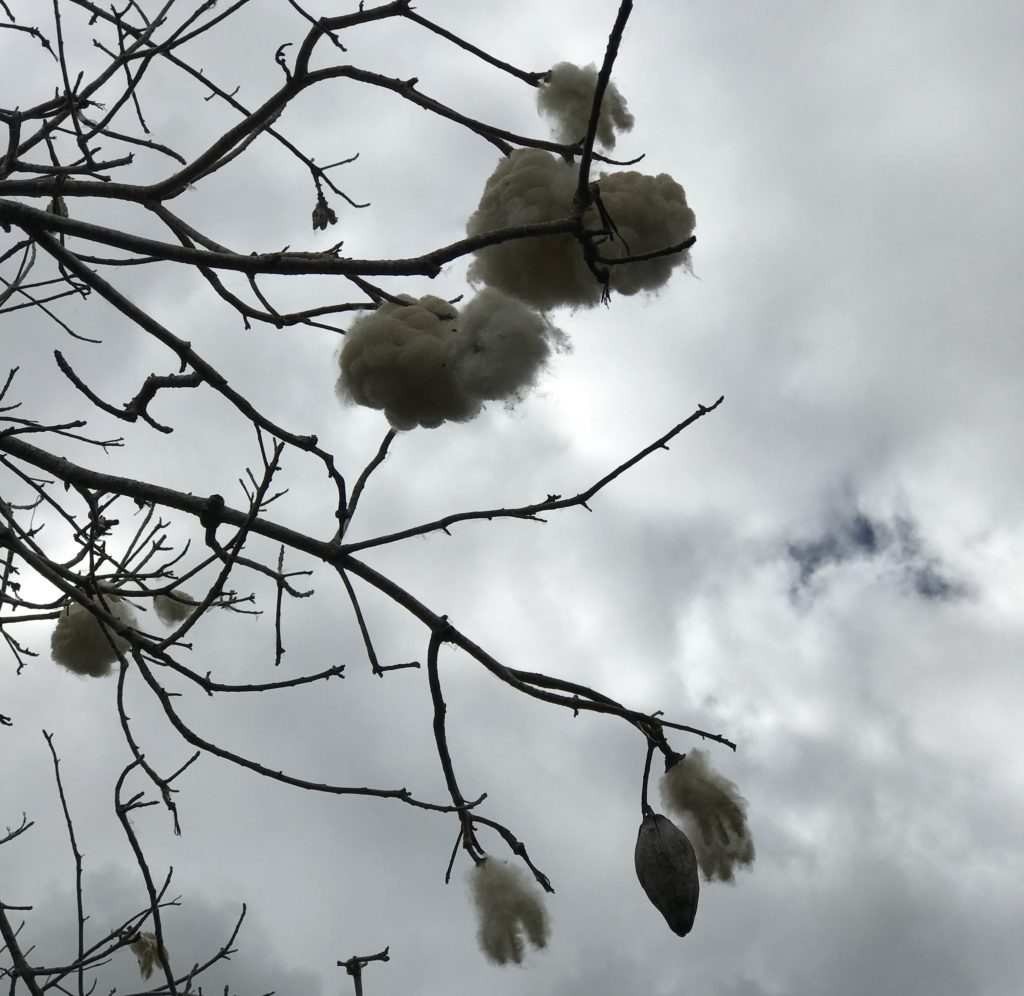
I wish I had been quicker with my camera, as an old guy came around a bend with a huge load of firewood on his back, on our return to Jim’s hut. The path itself was enchanting.
